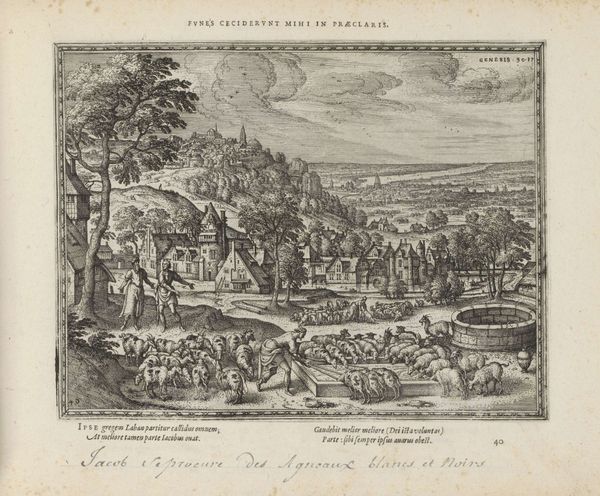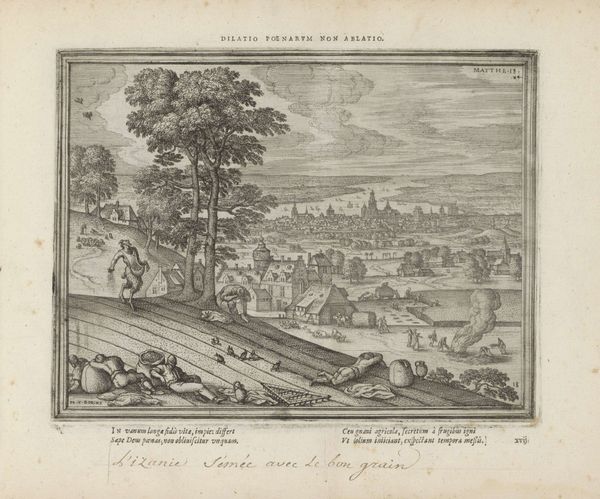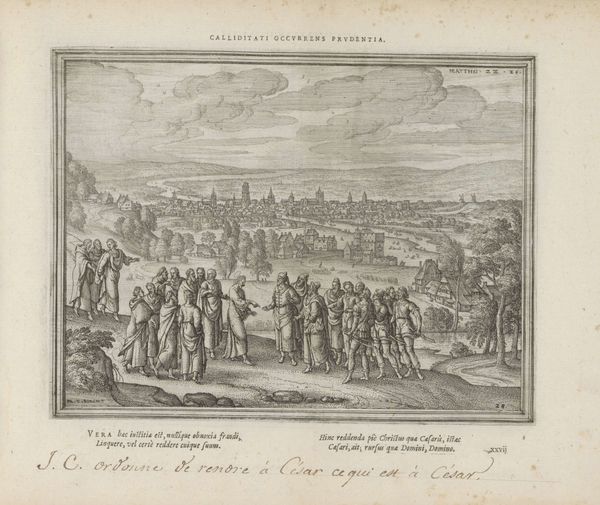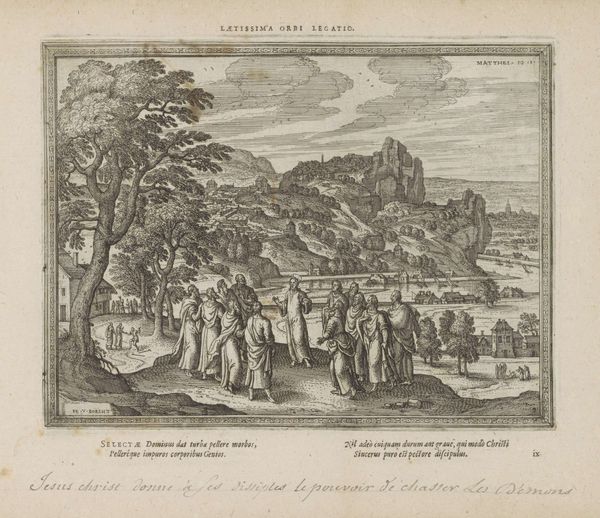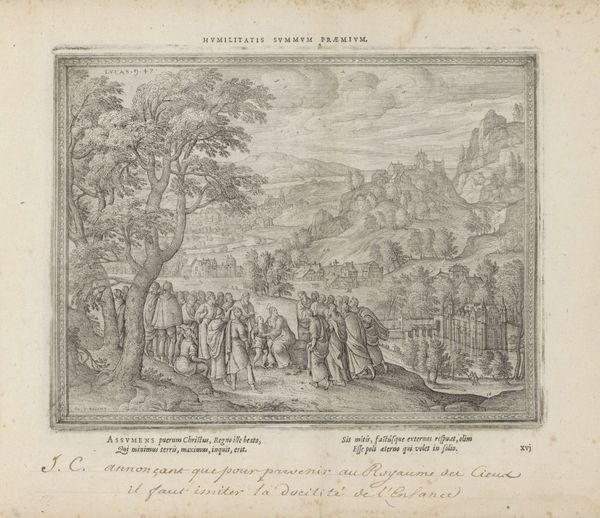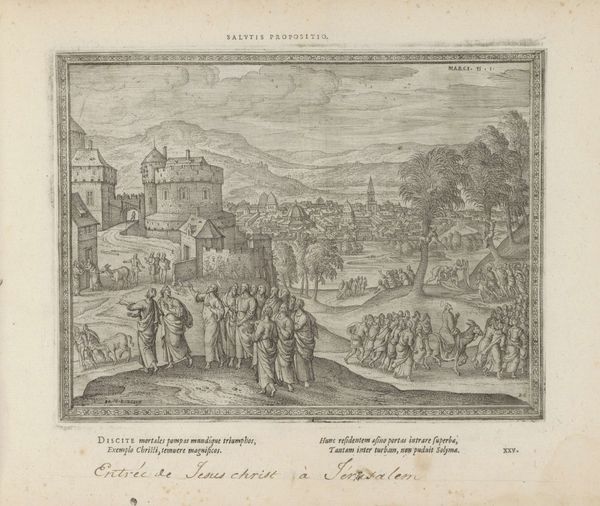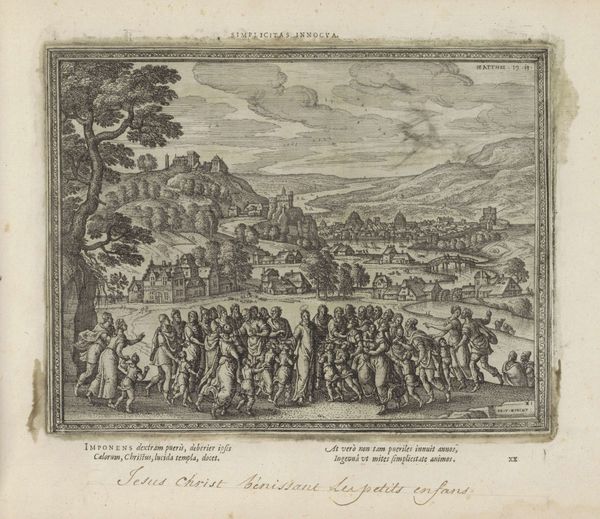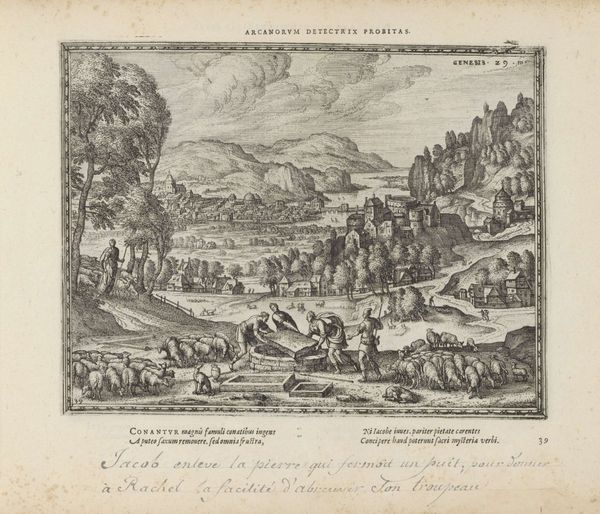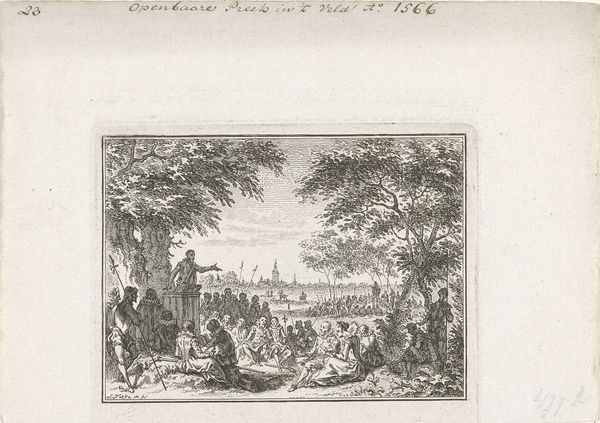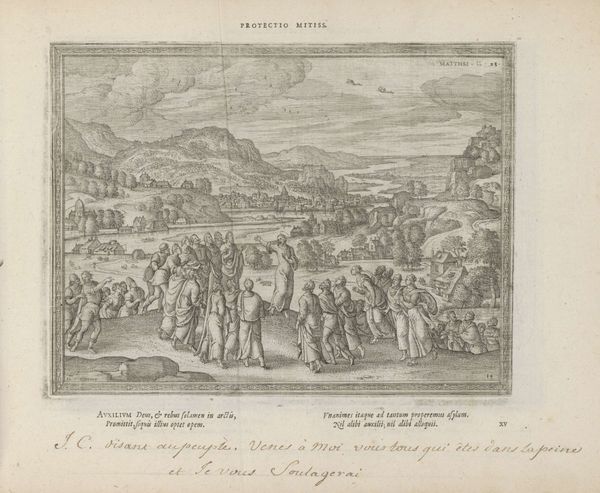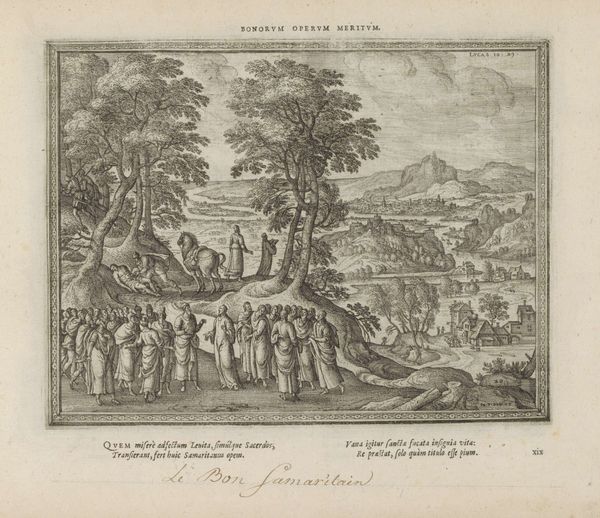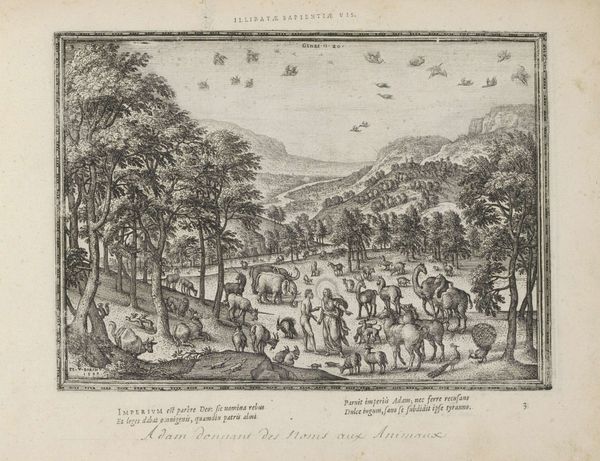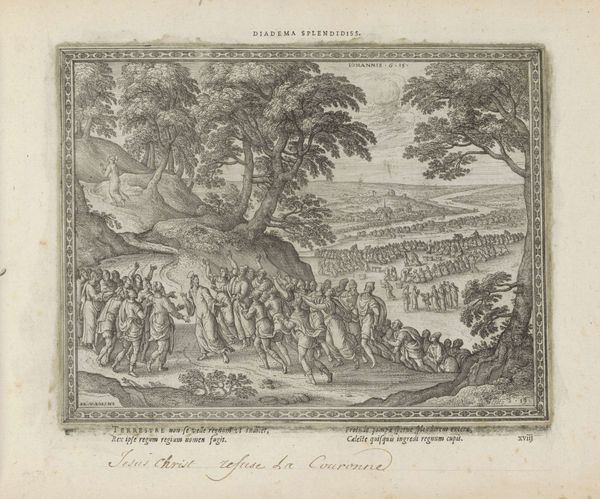
print, engraving
#
narrative-art
#
baroque
# print
#
old engraving style
#
landscape
#
figuration
#
history-painting
#
engraving
Dimensions: height 190 mm, width 246 mm
Copyright: Rijks Museum: Open Domain
Curator: Today we are looking at “Wonderbaarlijke spijziging,” or “Miraculous Feeding,” an engraving created sometime between 1582 and 1613 by Pieter van der Borcht the Elder, currently residing here at the Rijksmuseum. Editor: It's a sprawling scene. I'm immediately struck by how the fine lines manage to create a sense of depth and convey the scale of this massive crowd. But there's something about the uniformity of the figures that feels almost unsettling, as if they’re components of a much larger, calculated design. Curator: Precisely! The engraving depicts the biblical story of the Feeding of the Five Thousand. Van der Borcht masterfully uses landscape conventions to emphasize the contrast between the natural abundance provided and the city looming distantly in the background. Notice how the positioning and arrangement invite comparison of sacred abundance and urban reliance. Editor: It’s intriguing how he’s rendered them. The texture of the ground is meticulously detailed, and that single, mature tree feels quite intentional in a way, a solitary beacon. It contrasts strongly with the somewhat repetitive figures of the crowd, which strike me as being efficiently manufactured by a system rather than depicted. It makes me think about the production of images itself, how many impressions this one print could have produced. Curator: This speaks to the function of prints at the time, widely disseminating biblical stories and moral lessons. The very act of reproducing images made it available to a wide audience. Further the act of distributing communion. The act in itself contains a powerful message: faith can transcend material lack. And there is symbolic weight of each character, rendered carefully to evoke humanistic ideals as guides in the natural world. Editor: That resonates, seeing the material object that spreads the divine story. But thinking about distribution, each print becomes a thing of labor itself. It gives me pause, too. What system enabled the wide availability? How was it possible for Van der Borcht and others like him to continue this art production? Who benefited materially, outside of the messages intended. Curator: Well, it invites reflection on so many levels doesn't it? The interplay between the spiritual narrative and the material reality of its creation. A fascinating intersection! Editor: Indeed. Thinking about production, material, and distribution, it certainly deepens our understanding.
Comments
No comments
Be the first to comment and join the conversation on the ultimate creative platform.
